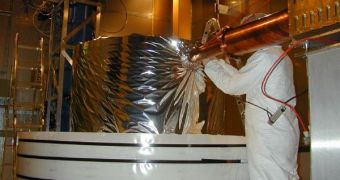Rumors around the Internet and the blogosphere have it that researchers working with the Cryogenic Dark Matter Search (CDMS) collaboration may have discovered certain signs of the elusive dark matter, the proposed force that acts like gravity, keeping galaxies together. The existence of this type of matter has been hypothesized for a long time, and many resources have been dedicated to tracking it down, but to no avail. Even now, with the new study due to come out soon, researchers say that laymen and experts alike should not allow themselves to be easily persuaded that signs of the stuff have actually been found, ScienceNow reports.
The CDMS is a small array of particle detectors, buried deep in the Soudan mines of Minnesota, and whose goal is to detect certain signs of dark matter. Wafers of germanium and silicon, both semiconducting materials, make up most of the detector. They have been selected because they have, at least in theory, the ability to detect signs of weakly interacting massive particles (WIMP), which are widely believed by physicists to be the main components of dark matter. The team in charge of handling the CDMS may publish a new set of results, analysts say, but it's highly unlikely that they will be of considerable significance.
Critics base their claims on the fact that the same team has published negative evidence in previous works. They couple this fact with the knowledge that the scientists in the group have not increased their existing datasets considerably, before elaborating the new research. Therefore, analysts say, it's highly unlikely that their results will represent something more than a simple statistical fluke. Discovering dark matter would undoubtedly be one of the groundbreaking finds of our times, as it would help verify a large portion of existing astronomical, astrophysical and physics knowledge.
According to the buzz on blogs, the CDMS collaboration will publish a paper on December 18, saying that it has detected the unique and distinctive electrical and heat signals theorized to be produced when WIMP interact with the silicon and germanium nuclei. In addition to being absolutely sure of the correlation, the scientists must also weed out the background noises in the detectors, such as the signatures caused by other elementary particles (including neutrons), hitting the wafers.

 14 DAY TRIAL //
14 DAY TRIAL //